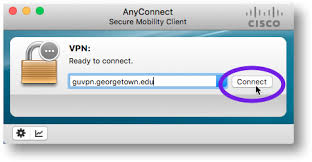Cisco VPN (Virtual Private Network) is a powerful tool used to securely connect two or more computers over the Internet. It is an ideal solution for businesses and organizations that need to securely access remote networks or resources. Cisco VPNs are available for both Windows and Mac OS X operating systems, making them a great choice for businesses of all sizes.
Cisco VPNs are easy to install and configure, with a simple interface that makes it easy to get up and running quickly. The software supports both IPSec and SSL protocols, allowing users to choose the best security option for their needs. It also offers advanced features such as tunneling, authentication, encryption, access control lists, and more.
Cisco VPNs are highly secure and reliable, providing users with the assurance that their data is safe from external threats. They also offer excellent performance, with fast connection speeds that allow users to access their remote resources quickly and efficiently. Additionally, Cisco VPNs are compatible with a wide range of devices including smartphones and tablets, making them an ideal choice for organizations who need secure access from multiple devices.
For Mac users who need a reliable Cisco VPN solution, there are several options available. The most popular is the Cisco AnyConnect Secure Mobility Client which provides secure remote access to corporate networks from any device running Mac OS X 10.6 or later. This client offers advanced features such as two-factor authentication support and integration with Active Directory for easy user management. Additionally, it supports all major IPSec protocols including IKEv2 (Internet Key Exchange version 2), IPsec (Internet Protocol Security), L2TP (Layer 2 Tunneling Protocol), PPTP (Point-to-Point Tunneling Protocol), and SSTP (Secure Socket Tunneling Protocol).
Overall, Cisco VPNs provide businesses of all sizes with powerful security solutions that are easy to set up and use on Mac OS X devices. They offer excellent performance along with robust security features that keep data safe from external threats while allowing users to securely access their remote resources quickly and easily.
What are the 4 most commonly asked questions about Cisco VPN Mac?
- How do I use Cisco AnyConnect VPN on Mac?
- How to install Cisco VPN on Mac?
- Does Cisco VPN work on Mac?
- Is Cisco AnyConnect VPN free?
How do I use Cisco AnyConnect VPN on Mac?
- Download the Cisco AnyConnect VPN client for Mac from your organization’s IT department or from the Cisco website.
- Open the downloaded file and double-click on the AnyConnect icon to launch the program.
- Enter your organization’s VPN address in the “Server Address” field and click “Connect”.
- Enter your username and password when prompted, then click “OK” to connect to the VPN server.
- Once connected, you will be able to access resources on the remote network as if you were physically connected to it.
How to install Cisco VPN on Mac?
- Download the Cisco VPN Client from the Cisco website.
- Open the downloaded file and follow the on-screen instructions to install the software.
- Once installed, launch the Cisco VPN Client application from your Applications folder.
- Enter your VPN credentials provided by your network administrator and click Connect.
- You should now be connected to your VPN network.
Does Cisco VPN work on Mac?
Yes, Cisco VPN works on Mac. Cisco’s AnyConnect Secure Mobility Client is available for Mac OS X and can be used to establish a secure connection between your Mac and the Cisco VPN server.
Is Cisco AnyConnect VPN free?
No, Cisco AnyConnect VPN is not free. It is a paid service that requires a valid license to use.
Tags: access control lists, active directory, anyconnect secure mobility client, authentication, cisco vpn, cisco vpn mac, download, encryption, ikev2 internet key exchange version 2, install, ipsec, ipsec internet protocol security, l2tp layer 2 tunneling protocol, mac os x, pptp point-to-point tunneling protocol, ssl, sstp secure socket tunneling protocol, tunneling, two-factor authentication support, username/password credentials, vpn
